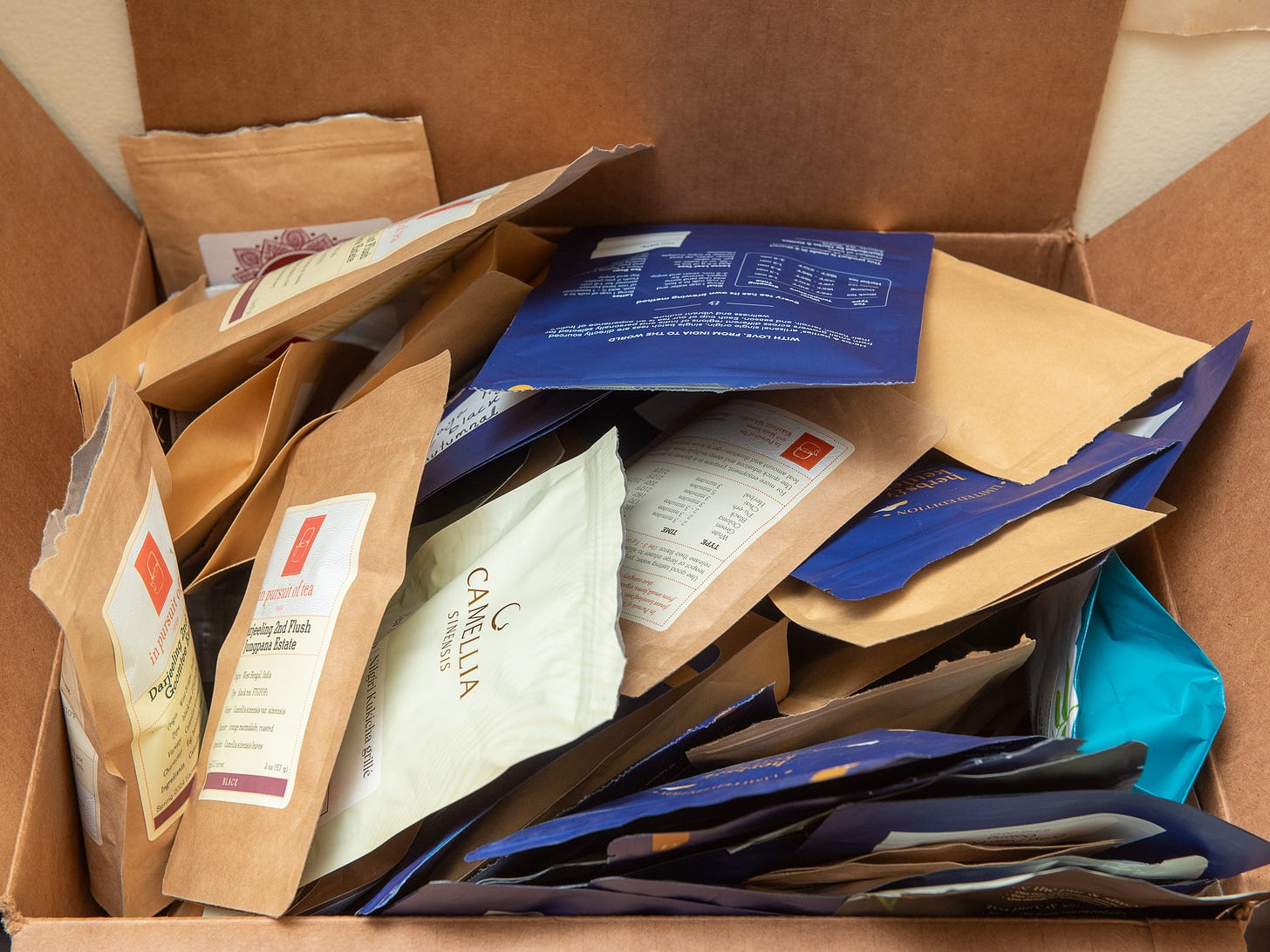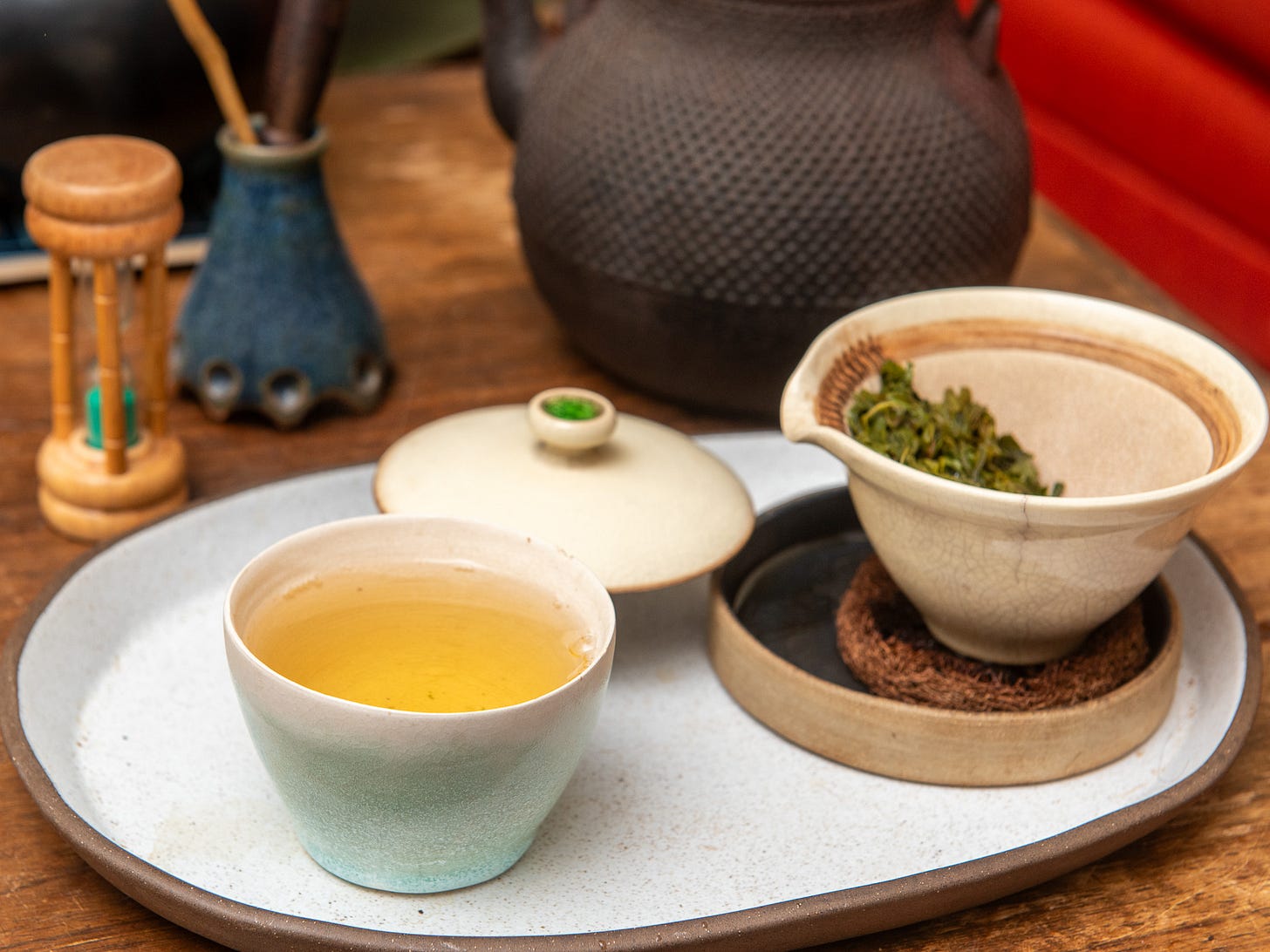License to kill green
Robust green tea from Việt Nam + oxidation and its discontents.
Tea auction update
Leafhopper’s first tea sample auction is going even better than anticipated! Thank you to everyone who contacted me with your bids. The current high bids for each lot are as follows:
Lot 1, Fermentation and friends: $125
Lot 2, Who longs for oolong: $70
Lot 3, Orthodox box: $100
Lot 4, Himalayan heights: $100
To bid, email me at max.falkowitz@gmail.com with Tea auction in the subject line. Include your bid in US dollars and the lot number you’re bidding on. If you’d like to be notified about where your bid stands relative to others, tell me in the email and I’ll keep you updated. Bidding will close on Sunday, April 20th at 11:59pm ET.
A taste of place
The tea: Lũng Phìn Small Leaf green tea, sold by Anna Ye Tea. $18 for 1oz.
Terroir is a tricky concept to pin down. When you consider regional climate, seasonal rainfall, soil composition, and local ecology, there are so many factors that can contribute to a tea’s “taste of place” that it’s hard to know where to begin. You can’t just think about the natural environment. There are also human factors. If you’re growing rows of corn with irrigation, weeding, pesticides, and chemical fertilizers, that natural environment is less influential than the farming system you’ve built on top of it. And when you think about tea cultivation, there’s even more you need to understand: a community’s ties to tradition (continuity of cultural practice), education (opportunities for change and innovation), wealth (technology for refinement and automation), and even transport infrastructure (pollution).
Lũng Phìn is a region of mountainous limestone in the far north of Việt Nam. Elevation is high and rainfall is relatively scarce on the plateau where this tea grows, so leaves unfurl slowly with concentrated flavors, especially ones from the older trees that see little human intervention. Since there isn’t much available firewood, the makers of this tea use dried corn stalks to process fresh tea leaves. You can taste all of these contributions in the tea. It’s savory and brothy with a strong mineral finish. There are hints of smoke and a grassy corn aroma. This is not delicate and sprightly green tea. It’s rustic, robust, and deeply rewarding to drink.
The source: Anna Ye Tea is a one-woman show run by tea educator Anna Ye focusing on unique handmade teas from Việt Nam. Last time we checked in with this friend of Leafhopper, it was to discuss Anna’s luscious Champagne Oolong, a Taiwanese style made by a Việtnamese industry professional who takes advantage of affordable and high quality local leaf. Today’s green tea reflects the other side of Anna’s business: highlighting regional and indigenous Việtnamese tea practices that rarely see cups beyond the country’s borders. For those concerned about 46% tariffs on Việtnamese goods, this stock is already in the US and ships from Queens, just a few blocks away from a Balkan smoked meat shop and my dog’s vet.
To brew: After some experimentation, my favorite cups of this tea came from treating it similar to a first flush Darjeeling. That means 4 grams in a 150 milliliter pot (~1g/37ml) made with boiling water that I cool slightly by pouring it in a thin trickle from a couple feet off the table. Then I steep with the lid off for 1 minute. The result is like a cross between gyokuro and genmaicha with a mix of grassy sweet and toasted savory and a thick, almost oily texture that clings to my lips. I can get 6 steeps out of the leaves. That’s unusual endurance for a green tea and a sure sign that there’s something special in the raw material. A taste of place, indeed.
Where leaf meets heat
When I wrote The Dumpling Galaxy Cookbook with chef Helen You, we made tutorials for three ways to cook dumplings: boiling, steaming, and pan-frying. Boiling is fastest and easiest and produces thicker, chewier skins. Steaming is a little more finnicky but yields silkier skins and works well with subtle ingredients like chicken and fish. Pan-frying takes longer and is trickiest to pull off, though it rewards you with crispy browned dumpling bottoms. The idea was that you could apply each of these three methods to all of the dumpling fillings in the book. Even if you used the exact same filling and dough, different cooking methods produced different dumplings.
What’s true for dumplings is true for tea: it’s the cooking method that defines the dish. And cooking tea begins with kill green. Sha qing is the Chinese term for heating fresh tea leaves to halt oxidation, thus “killing” enzymes to maintain the leaves’ “green.” It’s not the smoothest translation, but kill green is a crucial stage in almost all tea production. You can learn a lot about a tea by the kill green treatment applied to it, including today’s Lũng Phìn green.
Keep reading with a 7-day free trial
Subscribe to Leafhopper to keep reading this post and get 7 days of free access to the full post archives.







